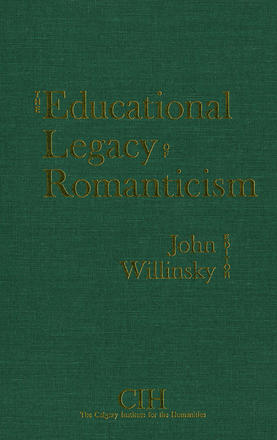
Description
This international collection of essays by leading authorities in literature and education presents the first comprehensive view of the impact of Romanticism on education over the course of the last two centuries. Romanticism’s reconception of self, nature, writing and the imagination forms a chapter of intellectual history that has led to a number of innovative programs in the schools. The book returns to the educational thinking of key figures from the time—Rousseau, Wordsworth, Mary Shelley and Coleridge—before charting their influence on such historical and contemporary developments as Montessori schools, art education, free schools and current writing programs. The contributors tend to challenge common assumptions concerning Romanticism and do not shy away from its darker side; their work encompasses both theoretical considerations of Romantic and post-modern conceptions of the self and practical concerns with Romanticism’s potential for the school curriculum. The Educational Legacy of Romanticism represents a multi-disciplinary inquiry into the continuing influence which cultural endeavours can have on the social practices of society.